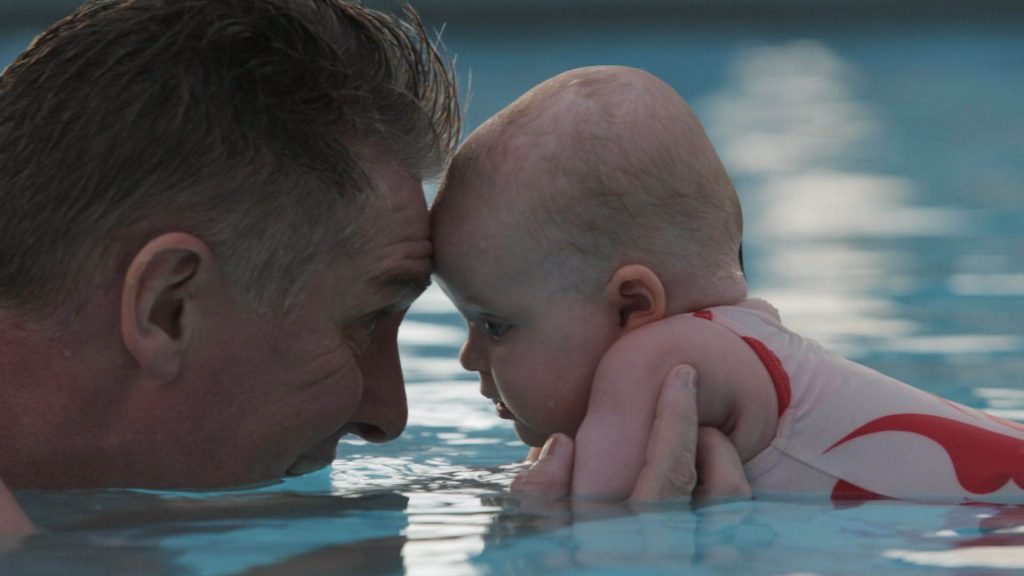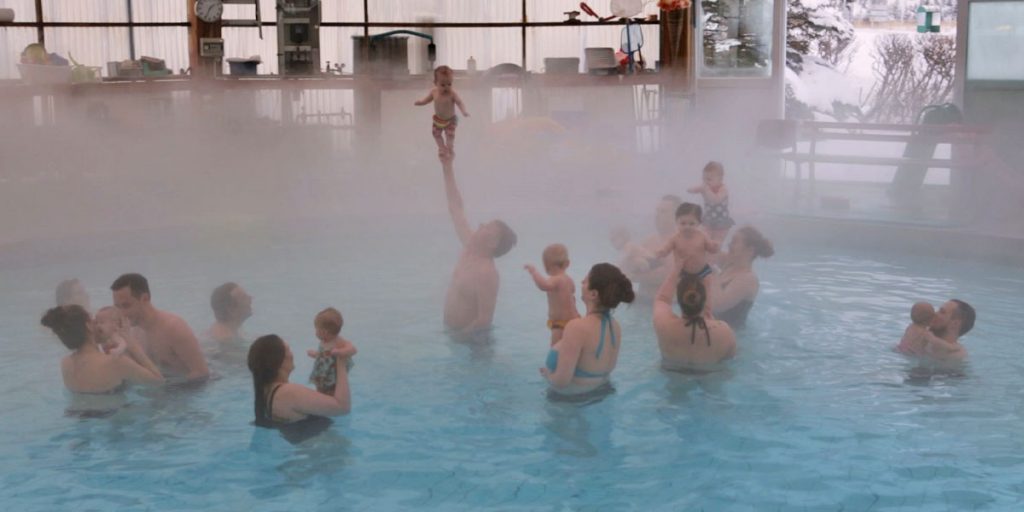Dive: Rituals in Water is a wonderfully fulfilling documentary about water, newborns, and the vital relationship between the liquid element and the human body.
Silence. Water trickles down the screen; it overflows; the theatre is submerged. Suddenly, you don’t feel that nudging pain in your lower back anymore. You’re floating around the cinema, and so is everyone else in the room. You’ve become one with water; it feels like you’re back into the dense nothingness of your mother’s womb. Then the dialogue breaks the dripping noise of the liquid, and we land into our hopefully not too uncomfortable seats again. You’re still feeling a little wet all around. This could have been a symbolist flick on our unbreakable ties with the sea, but no. Welcome to Akranes, Iceland. And what you’re watching now is a documentary.
Under the clear frosty skies of the lost continent of Vikings, colours shine a bit brighter, and Dive: Rituals in Water opens in a winter-like palette saturated with limpid shades of blue. The village of Akranes has a population of 7,411 and a high enough birth rate for the documentary’s hero Snorri Magnússon to offer induction swimming classes to newborns – which he does with wide-eyed enthusiasm and utter trust in his pupils. The results are staggering. And parents have never been this confident before.
Snorri’s story is quite simple – and rather fascinating. Born and raised in Akranes, he realised that something absurd was going on: though the village was a fishing joint, only a small percentage of its inhabitants were able to swim. To tackle the problem, the city council built a public swimming pool and set up swimming classes. Still, Snorri thought, it wasn’t enough. People had to learn how to interact with – and not counteract – water, and the only way to let them do so would have been teaching infants not to be afraid of their gestational liquid environment. And it worked.

Dive was shot by three directors (Elín Hansdóttir, Anna Rún Tryggvadóttir, and Hanna Björk Valsdóttir), is 1 hour 13 minutes long, and most of time you’ll witness nothing more than the blue eyes of lovely, plumpy sprogs being plunged into a pool with the joyous solemnity of a baptismal ceremony. Icelanders do take their relationships with their bodies very seriously. There’s a profound physical awareness in the way they linger into those chlorine waters. Just like in a pregnant woman’s belly, body and mind are one, and the surrounding environment is but an extension of a holistic unity. This might sound altogether philosophical. However, the more we listen to the babies’ soothing cries of amazement, the more we wish we’d had our personal Snorri too.
We wish we could experience the blissful trance state that Dive’s protagonists enjoy as they paddle along calm, indoor currents. We wish we could be part of that exclusive – but inclusive – sect of blessed few who renounced the wear and tear of daily routine to reconnect with their bodily selves, and through them, to their physical memory. We wish we could smile innocent smiles and wear odd swimming suits, just as Dive’s miniature heroes do. And, for a moment, we vaguely wonder about the etymology of the word ‘documentary’, and how it became synonym for grand events and over-the-top narrative feats.
Truth is, documentaries are just meant to show the proceedings of life on earth in an objective way. And I reckon swimming cherubs fit into that picture. Therefore, all hail Dive and the staggering simplicity of everyday heroes. You bring happiness into our lives. You give us a reason to taste the flavour of humanity again.
Dive: Rituals in Water premiered at the Glasgow Film Festival today, and will be screened again on Saturday 29th February.

